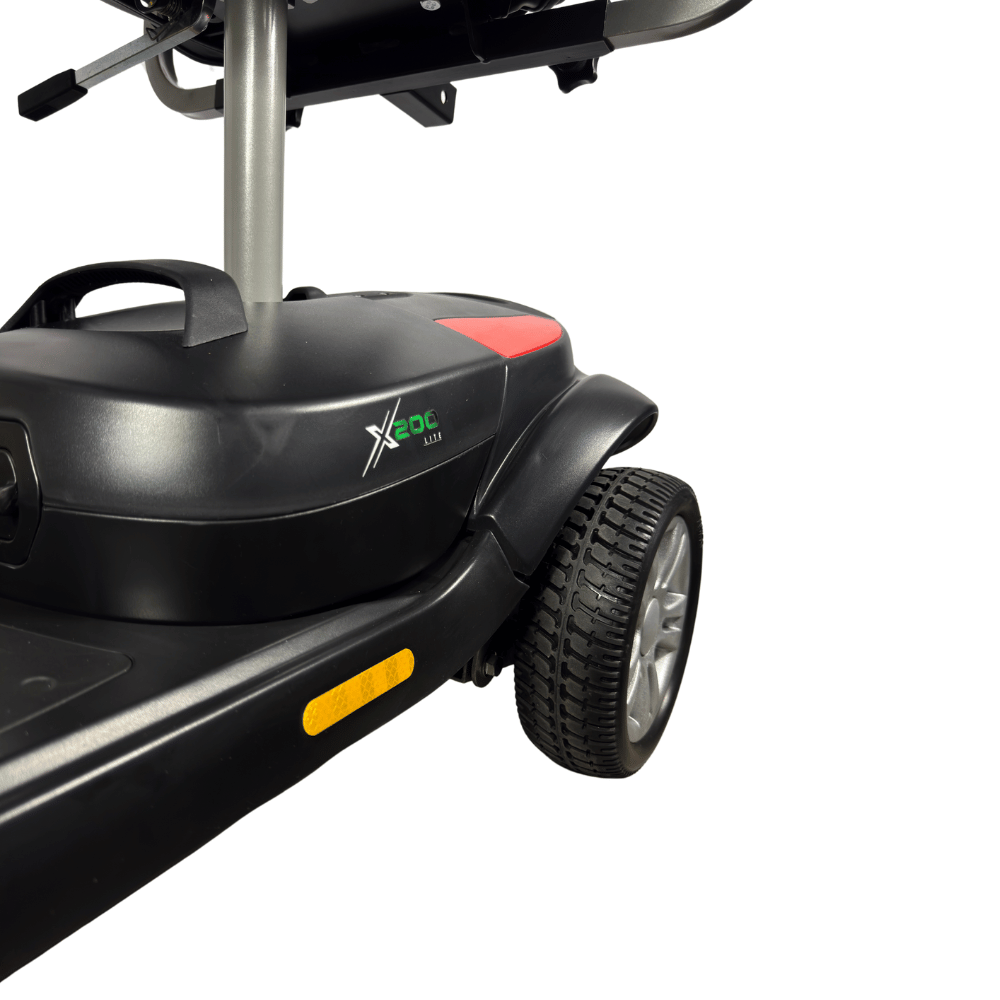Understanding mobility scooter specifications can sometimes be tricky. Particularly when it comes to buying your first scooter, you’ll find that there is a lot to look over.
It’s in no-one’s interest, least of all ours, for you to make the wrong choice. A mobility scooter is a highly personal consideration. Because we want to avoid a scenario where you end up with the wrong product, Lifestyle & Mobility have produced this guide.
Wheels and Tyres
Let’s begin from the ground up. Wheels and tyres on mobility scooters are so fundamentally important, given that they are how your product (and, by extension, you) physically comes into contact with the terrain. They vary as much as mobility scooters do themselves. Smaller boot or folding scooters often have wheels which their tyres are physically attached to. This is to make them much tougher than would be expected. These wheel-and-tyre combinations are generally referred to as being puncture-proof.
 Case in point is the rear wheel assemblage on the LuXe Mobility X200 Lite, as shown in the photo to the left.
Case in point is the rear wheel assemblage on the LuXe Mobility X200 Lite, as shown in the photo to the left.
In contrast, pneumatic tyres are generally found on larger mobility scooters. They can be an optional choice. Whilst, obviously, there is the risk of punctures with these tyres, they massively enhance comfort on larger, off-road ready scooters. If you are shopping for a larger scooter that can handle varied terrains with ease, pneumatic tyres may be for you.
Ground clearance is the next level up, as it were, when it comes to the chassis of a mobility scooter. It is a major determinant of what is and isn’t suitable terrain.
Anti-tip wheels are standard across virtually all scooters, though they shouldn’t be relied on when going up steep slopes. This is because they are a failsafe feature rather than a first resort for users.
Mobility Scooter Motors & Batteries
The vast majority of mobility scooters are rear-wheel-drive, with the motor found at the rear axle. As you would expect, given the size and weight range of mobility scooters, the power of their motors ranges substantially.
That being said, it’s batteries which tend to command most attention. And Lifestyle & Mobility strongly advise that you pay attention to battery specifications also when choosing your scooter. This is because knowing a bit about batteries is fundamentally important to understanding mobility scooter specifications.
The most obvious decision to make when choosing a mobility scooter is between traditional lead acid batteries or the newer lithium varieties. Why is this such a crucial choice? Well, it comes down to battery weight, lifespan and travel restrictions. Lithium batteries are mainly found in the more lightweight scooters. Particularly in folding scooters, where weight reduction is key. Do you want a mobility scooter that lifts easily into a car boot? Then lithium batteries may be for you.
However, when it comes to going further afield with a lithium battery, things can become more complex. If you want to travel overseas, Lifestyle & Mobility strongly recommend checking with your travel provider before embarking. As always with mobility scooters, and motorised vehicles in general, there do tend to be trade-offs. The second part of this blog will examine these in more detail.